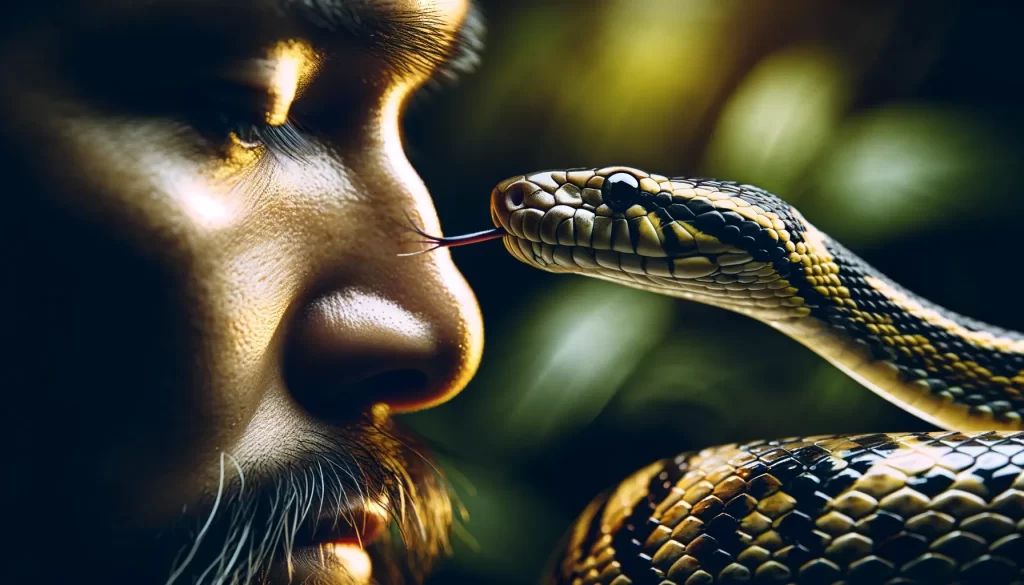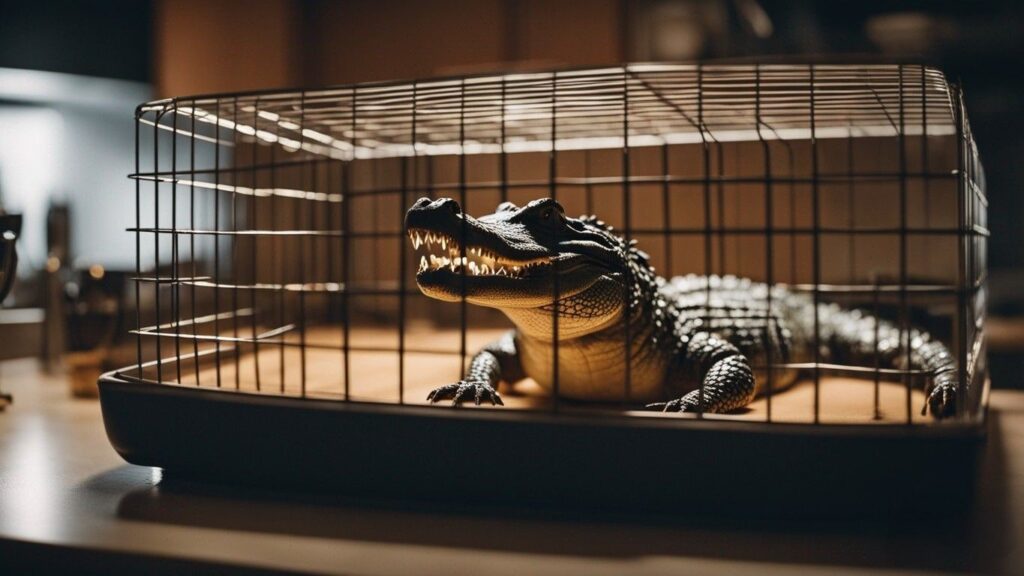
So, you’re curious about whether pet snakes recognize their owners, huh? Well, it’s a fascinating topic that has intrigued many snake enthusiasts.
After all, when you think of pets recognizing their owners, images of loyal dogs or cuddly cats might come to mind.
But what about our slithery companions? Can they truly bond with their human caretakers and show recognition?
Let’s take a closer look at this intriguing question and explore the fascinating world of pet snakes and their ability to form connections with their owners.
The Nature of Pet Snakes
Intro to pet snakes
Pet snakes can make fascinating and unique pets. Unlike traditional companion animals such as dogs or cats, snakes require a different level of understanding and care.
They have captured the attention of many reptile enthusiasts and curious pet owners alike.
While their reputation may precede them, it is important to explore their characteristics and social behaviors to better understand their ability to recognize their owners.
Characteristics of pet snakes
Pet snakes come in various species, each with its own distinct characteristics. They are ectothermic, which means they rely on external sources of heat to regulate their body temperature.
Snakes are also limbless and possess scales that play an important role in their survival. They lack eyelids and instead have a specialized scale called the brille that protects and moisturizes their eyes.
Additionally, snakes have a unique mode of locomotion known as serpentine movement, allowing them to slither and navigate different terrains.
Social behaviors of pet snakes
Contrary to popular belief, snakes are not anti-social creatures. While they may not exhibit the same level of social bonding seen in mammals, they do engage in certain social behaviors.
Some species of snakes, such as the garter snake or the African house snake, may even tolerate being housed in groups under the appropriate conditions.
Some snakes may exhibit a limited form of parental care, such as guarding their eggs or assisting their newborns in shedding their skin.
However, it is important to note that the social behaviors of snakes can vary based on the species and individual characteristics of each snake.
Recognizing Owners: Fact or Fiction?
Can pet snakes recognize their owners?
The ability of snakes to recognize their owners has been a topic of fascination and debate among reptile enthusiasts. While it is challenging to definitively determine the extent of their recognition, many snake owners have reported behaviors that suggest recognition and memory of their presence. However, it is essential to consider the existing scientific evidence before drawing any conclusions.
Evidence of recognition
Although snakes lack the same cognitive abilities as mammals, studies have suggested that they may possess some level of recognition. Research conducted on ball pythons has demonstrated that they can differentiate between their owner and a stranger based on the owner’s scent. This suggests that snakes have the ability to remember and recognize specific individuals.
Limitations of research
While these studies provide valuable insights into the potential recognition abilities of snakes, it is important to acknowledge their limitations. The research conducted thus far is limited, and more studies are needed to fully understand the extent of snake recognition. Additionally, it is crucial to interpret snake behavior with caution, as their actions may be influenced by factors other than recognition, such as associative learning or response to stimuli.
Sensory Perception in Pet Snakes
Overview of snake senses
To better understand how snakes may recognize their owners, it is important to explore their sensory capabilities. Snakes rely on three main senses: olfactory (smell), visual, and auditory. Each of these senses plays a vital role in their perception of the world around them.
Olfactory perception and recognition
Snakes have a highly developed sense of smell, thanks to their Jacobson’s organ, also known as the vomeronasal organ. This organ enables them to detect and analyze chemical signals in their environment. Research suggests that snakes can associate specific scents with positive or negative experiences, which may contribute to their ability to recognize familiar individuals, including their owners.
Visual perception and recognition
While snakes may not possess the same visual acuity as humans or other mammals, they are not entirely reliant on their sense of smell. Some snake species possess specialized photoreceptor cells in their eyes, allowing them to detect certain wavelengths of light and perceive movement. This visual perception may contribute to their ability to recognize their owners based on distinct visual cues or patterns.
Auditory perception and recognition
Snakes do not possess external ears, but they are not completely deaf. They are capable of perceiving vibrations and low-frequency sounds through their jawbone, which is connected to their inner ear. While the extent of their auditory perception is still under investigation, it is possible that snakes can recognize the unique vocal patterns or tones produced by their owners.
Understanding Snake Cognition
Comparing snake cognition to other animals
When discussing recognition in snakes, it is essential to recognize the differences in cognitive abilities between snakes and other animals. Snakes have a more limited neural capacity, and their cognitive processes may differ significantly from those of mammals or birds. While snakes may not possess the same level of cognitive complexity, they still exhibit certain forms of learning and memory.
Learning and memory in snakes
Studies have shown that snakes are capable of learning and remembering certain tasks and associations. For example, snakes can learn to associate certain scents or locations with food sources. This suggests that they possess a form of memory and can retain information to guide their behaviors and responses.
Association and conditioning
Snakes can also be conditioned through associative learning. By repeatedly pairing a particular stimulus, such as a scent or a sound, with a positive or negative outcome, snakes can develop conditioned responses. It is possible that this type of conditioning may contribute to their ability to recognize their owners by associating them with positive experiences, such as feeding or handling.
Factors Influencing Recognition
Frequency of interaction
The frequency of interaction between a snake and its owner may play a significant role in the development of recognition. Regular and consistent interaction can create familiarity and potentially enhance the snake’s ability to recognize its owner. Snakes that receive minimal or infrequent interaction may be less likely to exhibit signs of recognition.
Feeding routines and associations
Feeding routines and associations can also influence a snake’s recognition of its owner. Snakes often associate their owner with the delivery of food, as it is typically the owner who provides meals. This association may contribute to the snake’s ability to recognize and respond to its owner’s presence, as it anticipates a positive outcome such as feeding.
Handling techniques
The way a snake is handled and interacted with can impact its recognition of its owner. Gentle and consistent handling can foster trust and create a positive association with the owner. Snakes that have been handled in a rough or stressful manner may be less likely to recognize their owners or show signs of recognition.
Individual snake personality
Every snake has its own unique personality and temperament. Some snakes may naturally be more receptive to recognition, while others may be less responsive or exhibit different behaviors. It is important to consider the individual characteristics of the snake when assessing its ability to recognize its owner.
Behavioral Indications of Recognition
Altered behavior towards the owner
One potential behavioral indication of recognition is a change in a snake’s behavior when its owner is present. Snakes may exhibit increased activity, curiosity, or a sense of calmness when their owner is nearby. These changes in behavior suggest that the snake recognizes and responds differently to its owner compared to other individuals.
Preference for the owner’s presence
Another possible indication of recognition is a snake’s preference for its owner’s presence. Some snake owners have reported that their pets seek out their company and show signs of distress when separated for extended periods. This preference for the owner’s presence could be a result of recognition and the snake’s attachment to its owner.
Responses to the owner’s voice
Snakes lack external ears, but they may still respond to vocal cues from their owners. Some snake owners have observed their pets reacting to their voice by looking in their direction or displaying certain body movements. While further research is needed to fully understand this behavior, it could indicate that snakes are able to recognize and differentiate their owner’s voice from others.
Body language and indications
Observing a snake’s body language can provide valuable insights into its recognition of its owner. Some snakes may display relaxed and contented behaviors when in the presence of their owner, such as staying coiled comfortably or exploring their enclosure with confidence. These positive body language indicators can suggest an established recognition and bond with their owner.
Challenges in Assessing Recognition
Lack of standardized tests
Assessing the recognition abilities of snakes poses various challenges. One such challenge is the lack of standardized tests specifically designed to evaluate their ability to recognize their owners. The absence of standardized assessments makes it difficult to compare research findings and draw concrete conclusions about snake recognition.
Interpreting snake behavior
Interpreting snake behavior accurately can be challenging, as their actions may be influenced by multiple factors. Snakes may exhibit certain behaviors that appear to indicate recognition, but they could also be driven by other factors such as conditioning, instinct, or response to environmental stimuli. It is crucial to consider a holistic approach when analyzing snake behavior to avoid misinterpretation.
Individual differences
Each snake is an individual with its own unique set of behaviors, preferences, and experiences. This individual variation can make it challenging to generalize findings about snake recognition. While some snakes may readily recognize their owners, others may demonstrate different behaviors or show less recognition.
Anthropomorphism
Humans have a tendency to anthropomorphize animals, attributing human-like thoughts and emotions to them. While it is natural to empathize with our pets, it is important to remember that snakes have distinct cognitive processes and do not experience emotions in the same way humans do. Avoiding anthropomorphism allows for a more accurate understanding of snake behavior and recognition capabilities.
Building a Strong Relationship
Establishing trust with a pet snake
Building a strong relationship with a pet snake starts with establishing trust. Snakes are sensitive animals and can become stressed or anxious if not handled correctly or in a calm environment. By gradually introducing handling and providing a secure enclosure, pet owners can create a safe and comfortable environment that promotes trust between them and their snake.
Positive reinforcement training
Positive reinforcement training can be employed to further enhance the bond between a snake and its owner. Snakes can be trained to associate certain positive behaviors, such as coming out of hiding to explore or interacting with their owner, with rewards such as food or playtime. This form of training strengthens the bond and encourages the snake’s recognition and response to its owner’s cues.
Bonding through regular interaction
Regular and consistent interaction is crucial for developing a strong bond with a pet snake. Spending quality time together through gentle handling, providing environmental enrichment, and engaging in activities that stimulate the snake’s natural behaviors can foster a sense of familiarity and companionship. This regular interaction promotes the snake’s recognition of its owner and reinforces the bond between them.
Offering a secure and stimulating environment
Creating a secure and stimulating environment within the snake’s enclosure is vital for its well-being and the development of a strong owner-snake relationship. Providing hiding spots, appropriate temperature gradients, and enrichment items tailored to the snake’s species can contribute to a sense of security and contentment. A stimulating environment encourages exploration and engagement, further promoting the snake’s recognition of its owner as a positive figure within its surroundings.
Alternative Explanations for Snake Behavior
Response to stimuli
Some of the behaviors attributed to recognition may be explained by a snake’s response to specific stimuli in its environment. Snakes may display behaviors that appear to indicate recognition of their owner, such as increased activity, when exposed to certain environmental cues or sensory inputs rather than solely in response to their owner’s presence.
Conditioned responses
Snakes can develop conditioned responses to specific cues or triggers, such as the sight or smell of their owner preparing their food. These conditioned responses may be mistakenly interpreted as recognition when, in fact, they are a learned association between a specific stimulus and a positive outcome.
Associating the owner with positive experiences
Over time, snakes may associate their owners with positive experiences, such as feeding or handling. This positive association can lead to altered behaviors, such as increased activity or a preference for the owner’s presence. While it may not necessarily indicate recognition in the same way humans experience it, it does suggest a learned association between the owner and positive outcomes.
Understanding snake instinct
Snakes possess innate instinctual behaviors that guide their actions and responses. Some behaviors that may appear to indicate recognition could be rooted in these instinctual tendencies rather than in cognitive recognition. Understanding and acknowledging the impact of snake instincts can help provide alternative explanations for certain behaviors.
Final Thoughts
The question of whether pet snakes can recognize their owners remains a fascinating and ongoing subject of study.
While scientific research provides some evidence suggesting the potential for recognition, it is important to approach the topic with caution and consider the limitations of current knowledge.
Factors such as individual variation, conditioning, and response to stimuli must be taken into account when interpreting snake behavior.
Building a strong and trusting relationship with your pet snake through regular interaction, positive reinforcement training, and providing a secure environment can enhance the bond between you and your snake, regardless of the extent of its recognition abilities.
Ultimately, enjoying the unique companionship of a pet snake goes beyond the need for definitive recognition – it is about sharing a fulfilling and enriching experience with a captivating and misunderstood creature.



